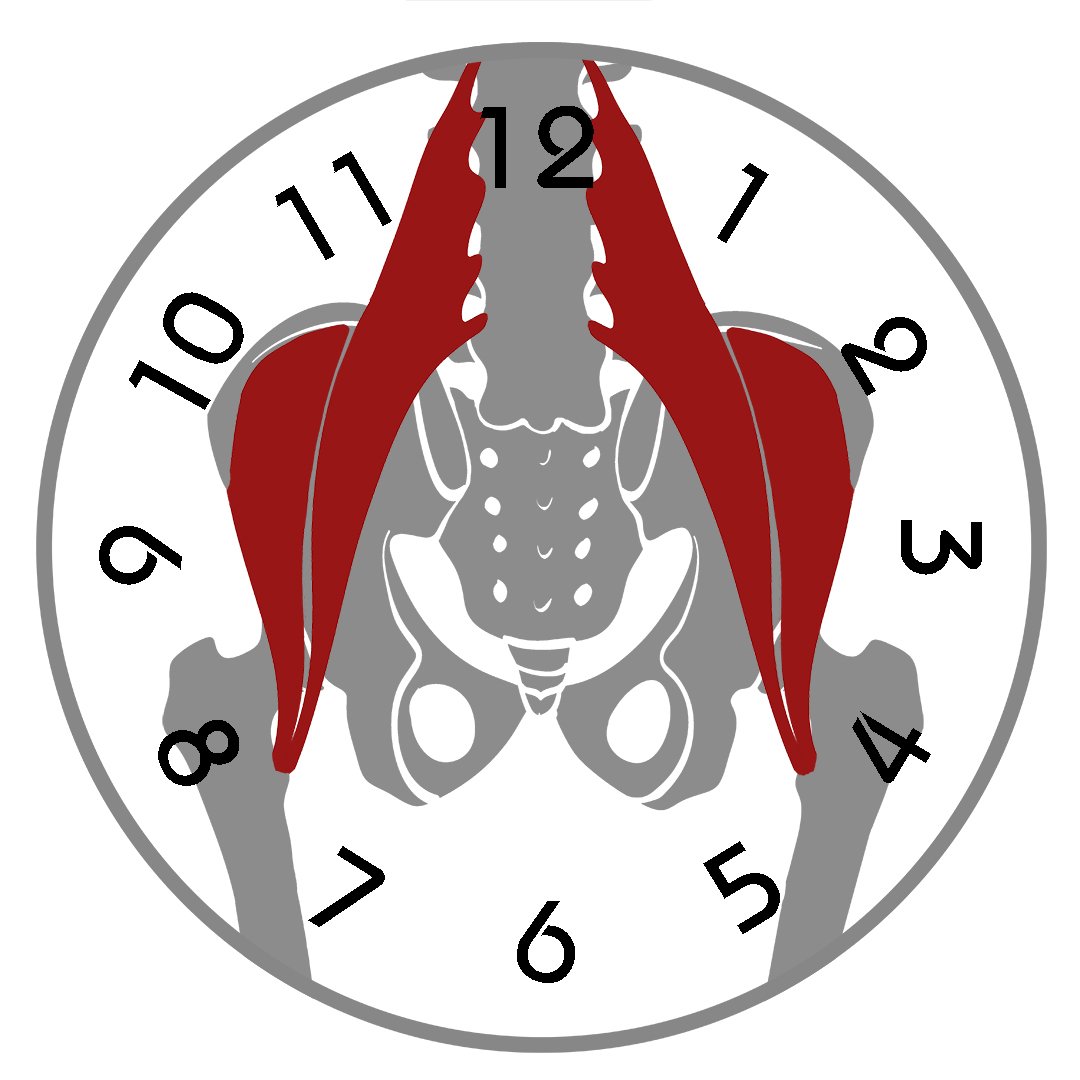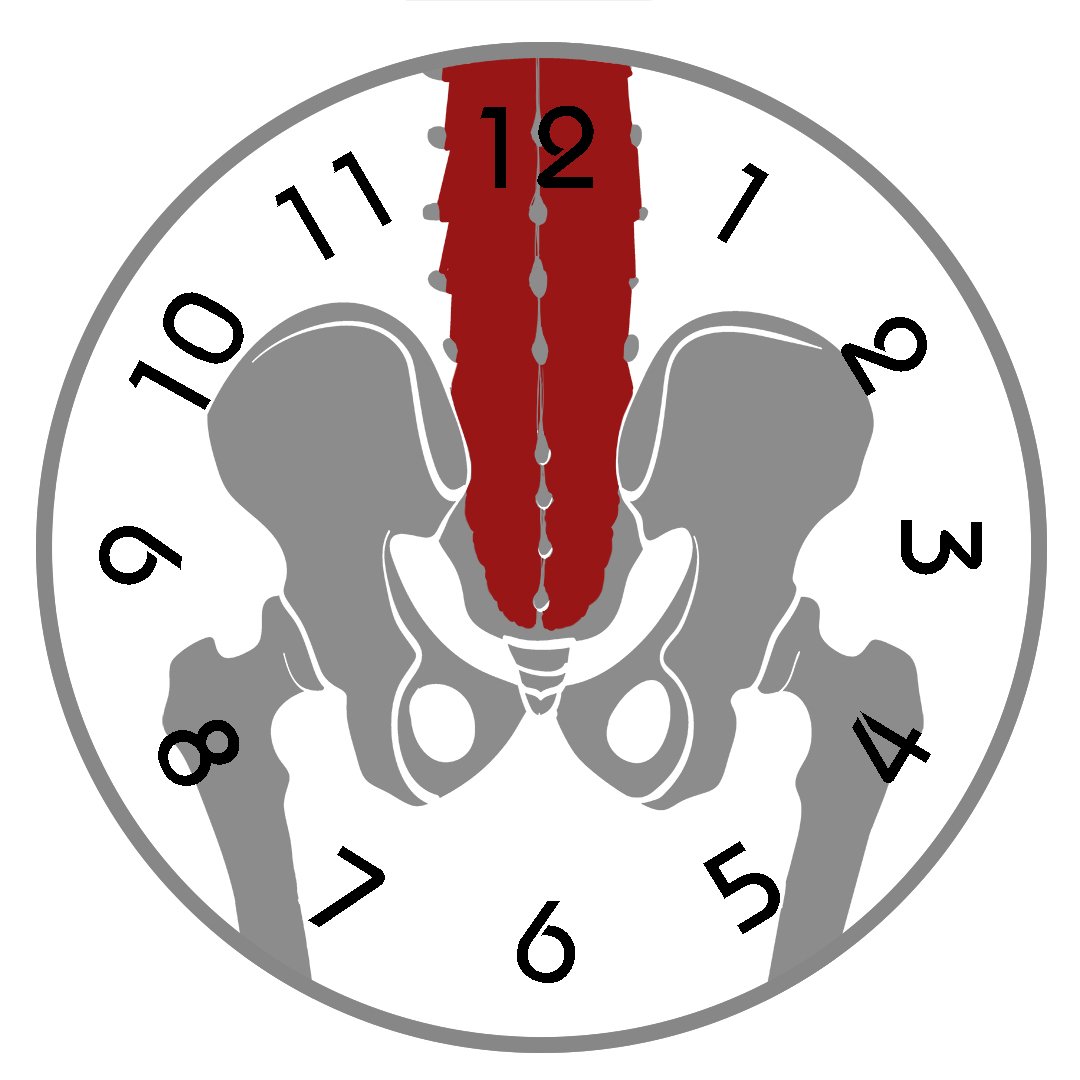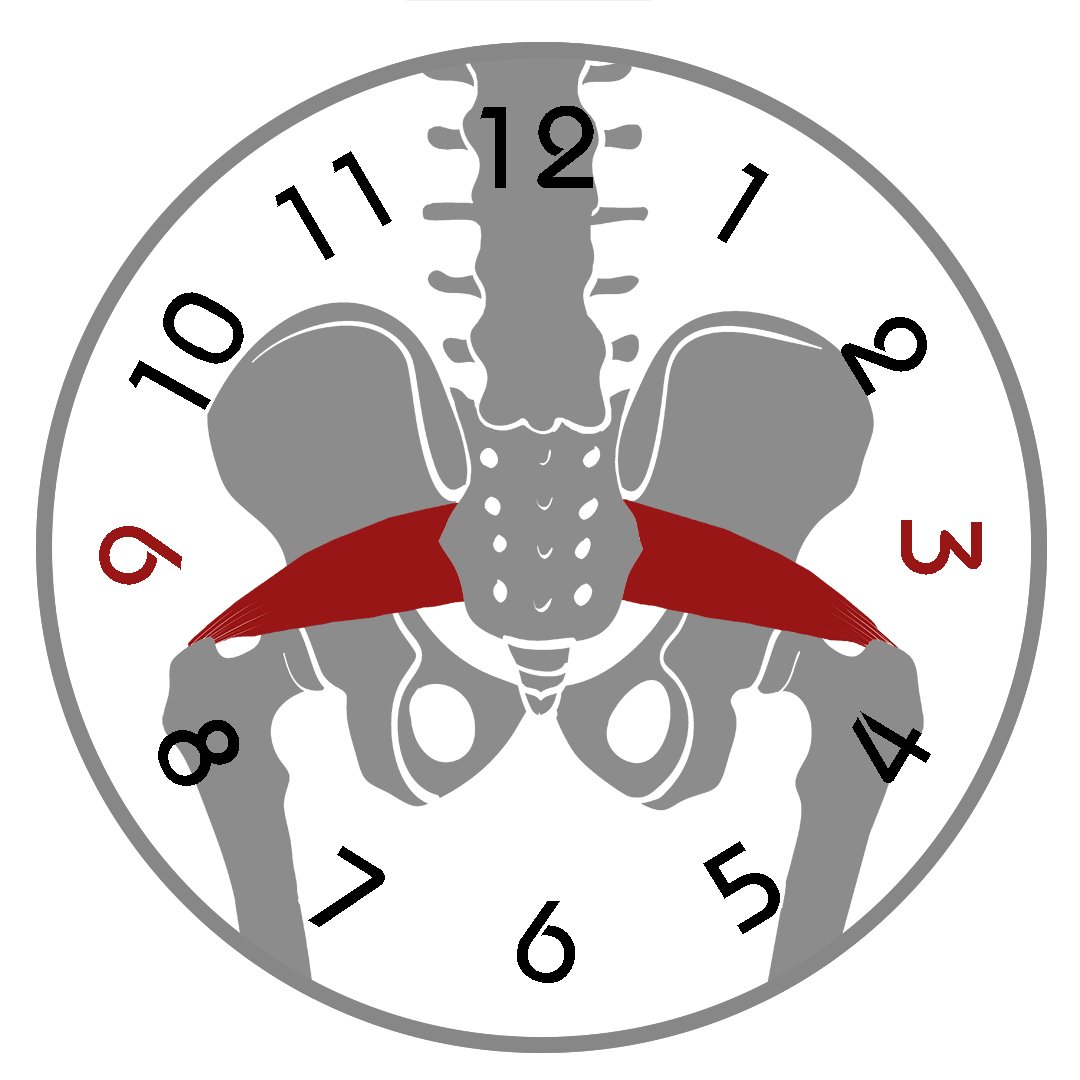Basic Stretches For Hips And Lower Back
Relieve chronic pain with Pelvic Clock® stretches for lower back, hip flexors, SI joints, sacrum, lumbar spine, piriformis, quadratus lumborum, multifidus, and psoas muscles.
STRETCHES FOR LOWER BACK & HIPS
Why do you need to stretch?
Stretching helps to improve posture, increase flexibility, reduce muscle tension, and relieve lower back or hip pain.
Although lower back or hip pain are very common, every case is unique.








Knowing the cause of pain helps to narrow down the list of the most effective stretches.
Click on the links below to learn about stretches appropriate for your specific condition. At the bottom of each page you’ll find a PDF with a set of instructions that you can access for free.
When you are trying to improve the flexibility of your spine, doing a Child's pose, Cat-Cow, Pelvic Tilt, and other generic stretches are a great start. But if you suffer from chronic lower back or hip pain, you should look for a more specific solution.
The lower back is a complex mechanism of bones, joints, ligaments, nerves, and 35 muscles attached to the sacrum and hip bones, i.e pelvis. This intricate web provides spinal stability, however it takes only one tight muscle to pull the spine and pelvis out of a healthy neutral position and cause pain.
Why use the Pelvic Clock?
The Pelvic Clock is a stretching tool that helps to increase flexibility of the lumbar spine and improve hip mobility.
The device cradles the sacrum and provides a safe 2 inch elevation. This elevation adds a third dimension to “pelvic tilts,” “knees to chest”, and other traditional back stretches.
By tilting your pelvis in specific directions you can stretch muscles difficult to reach otherwise, such as the Lumbar Multifidus, Quadratus Lumborum, Piriformis, Iliopsoas (aka hip flexors), Rectus Abdominis, External Oblique, and Internal oblique muscles.
You can also use the Pelvic Clock® for a lumbar traction.
When and how to stretch the lower back?
In the morning the lower back is often stiff from a sleeping position but it usually loosens up with movement. Start your day with 2 simple stretches:
Hip flexors (aka psoas or iliopsoas) get tight after sitting at the desk, driving a car, or riding a bike. Tight hip flexors pull the pelvis forward into the anterior pelvic tilt, increasing pressure of the lumbar spine and leading to lower back pain.
Stretching your hip flexors will relieve the pressure and help you return to a healthy neutral position of the pelvis and spine.
Release your hip flexors at the end of the day or during the day if possible.
How often should I stretch my lower back?
If you sit at the desk or drive every day, you should stretch your back daily.
Start slowly, listen to your body, and always stretch within your own limits.
Once the muscles are used to new movements, you can repeat the Pelvic Clock routine a few times a day, as long as your body is happy.
Why does my lower back hurt after stretching?
If you are over 50, completely new to pelvic stretches, or your lower back is sensitive from ongoing inflammation, the pressure from the hard surface of the device might make your lower back sore.
In this case, for the first 2-3 weeks, use a towel over the device for padding, and ice your back after exercising.
Remember to always stretch within your limits!
PRODUCT WARNINGS
Consult your physician or healthcare provider before performing any exercise program using this product for appropriate exercise advice and safety precautions. This product and its instructions are not intended to replace the advice and guidance of your physician or healthcare provider.
Exercises using this product should be performed in a slow and controlled manner. If you have trouble breathing or otherwise feel sick while using this product, stop and contact your physician or healthcare provider.
Be sure to read and follow the instructions as provided. Use only as intended and at your own risk. The manufacturer, Flect LLC, and its distributors assume no liability or responsibility for accidents or injury to persons or property that might result from the use of this product.
Do not use in areas of skin irritation. Stop using product if bruising occurs.
This product is not a toy. Keep out of reach of children and pets.
You may clean this product with mild soap and water. Dry with a cloth and store in a cool, dry place out of direct sunlight.
















